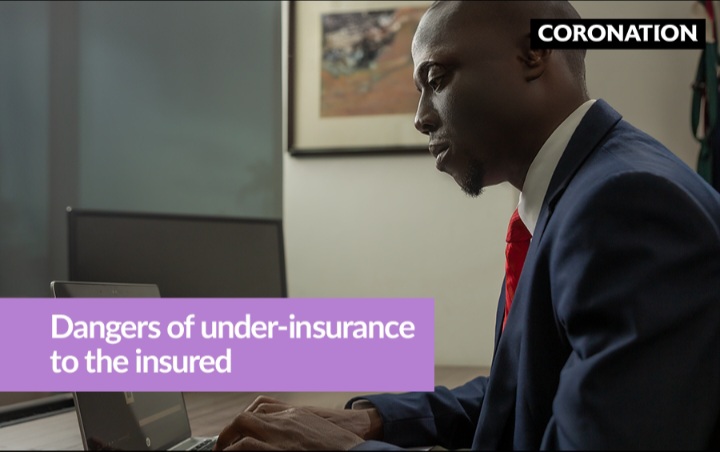Dangers of Under-insurance to the Insured
Insurance promises full compensation when claims occur; however, several factors may prevent insured individuals from receiving the full payout. These factors include policy excess, deductibles, single-article limits, and most notably, underinsurance. Underinsuring risks is a common practice among many policyholders. Often done without a full understanding of its implications, underinsurance may arise from various reasons, […]

screenshot 20250106 120737 gallery
Insurance promises full compensation when claims occur; however, several factors may prevent insured individuals from receiving the full payout. These factors include policy excess, deductibles, single-article limits, and most notably, underinsurance.
Underinsuring risks is a common practice among many policyholders. Often done without a full understanding of its implications, underinsurance may arise from various reasons, including insufficient awareness or dishonest intentions to reduce premium payment.
What is Underinsurance?
Underinsurance occurs when a policyholder insures their assets for an amount less than the real value or the current market value. In the event of a claim, this means that the claim amount may exceed the limit covered by the insurance company. Essentially, underinsurance is a situation where an insured individual deliberately reduces the value of their assets and insures them at lower value. The consequences of this practice may not become apparent immediately but are often exposed when a claim is investigated.
For insurance to fulfill its purpose, the coverage policyholders purchase must accurately reflect their personal or business requirements. Insuring assets for incorrect values or setting coverage limits too low can result in policies failing to operate as intended. This can leave policyholders with insufficient indemnity following a loss and jeopardize their ability to recover financially.
When underinsurance is identified, insurers apply the principle of average to calculate the actual payout. This means the insurance company calculates compensation based on the ratio of the insured value to the actual value, resulting in a reduced payout. For instance, if your property is underinsured by 40%, your payout will be reduced by the same percentage.
Causes of Underinsurance
Lack of Awareness: Many policyholders are unaware of the details of their insurance policies or the extent of their coverage needs, leading to underinsurance.
Misunderstanding Insurance Policies: Insurance policies could seem complex, with numerous terms, conditions, extensions, and exclusions. This complexity, as noted by Zurich in its April 2023 publication titled “A Guide to Underinsurance”, often leads to mistakes in determining adequate coverage.
Financial Constraints: Limited financial resources at the time of buying insurance may compel individuals to opt for lower coverage levels, especially if the policies appear expensive.
Overconfidence in Risk Management: Some policyholders, particularly those with a risk-seeking attitude, may overestimate their ability to manage risks and either forgo insurance or settle for inadequate coverage.
Impacts of Underinsurance.
Financial Strain: In the event of an accident or loss, underinsurance can result in only partial claims being paid, leading to significant financial strain.
Legal Issues: Liability policies protect insureds against legal claims arising from negligence. However, underinsured liability sections may leave the policyholder personally responsible for compensating third parties.
Emotional Stress: Dealing with financial uncertainty and potential losses due to underinsurance can cause significant emotional distress for policyholders.
Economic Effects
Underinsurance can have broader economic impacts, as it reduces the ability of individuals and businesses to recover from losses, potentially leading to reduced productivity and financial instability.
Managing Underinsurance: The Coronation Approach
Coronation takes a proactive approach to addressing underinsurance, emphasizing education, tailored solutions, and regular customer engagement.
Customer Education: Coronation ensures clients are well-informed about their insurance needs and policies. From the initial inquiry, customers are guided to avoid pitfalls that may lead to underinsurance.
Continuous Engagement: Regular communication with clients helps address queries and explain economic factors, such as inflation, which may impact the adequacy of insured values. This enables customers to revalue their assets or adjust their coverage as needed.
Tailored Solutions: Coronation offers customized insurance plans to meet individual needs, ensuring clients can secure adequate coverage without overstretching their financial resources.
Comprehensive Support: Coronation prioritizes building strong relationships with clients, helping them make informed decisions and avoid being left vulnerable due to underinsurance.
Conclusion
Underinsurance poses significant risks to policyholders ranging from financial hardship to emotional stress and legal liabilities. Understanding its causes and impacts helps policyholders take proactive steps to ensure their coverage is adequate. Coronation’s client-focused approach—including education, continuous engagement, and tailored solutions—helps mitigate the risks of underinsurance and empowering clients to achieve comprehensive protection.
To read more articles from Coronation Insurance, please visit https://coronation.ng/insights/
If you have any questions, please don’t hesitate to contact us at 02-012774500 | 02-012774566 | 02-012774577 or send an email to [email protected]
